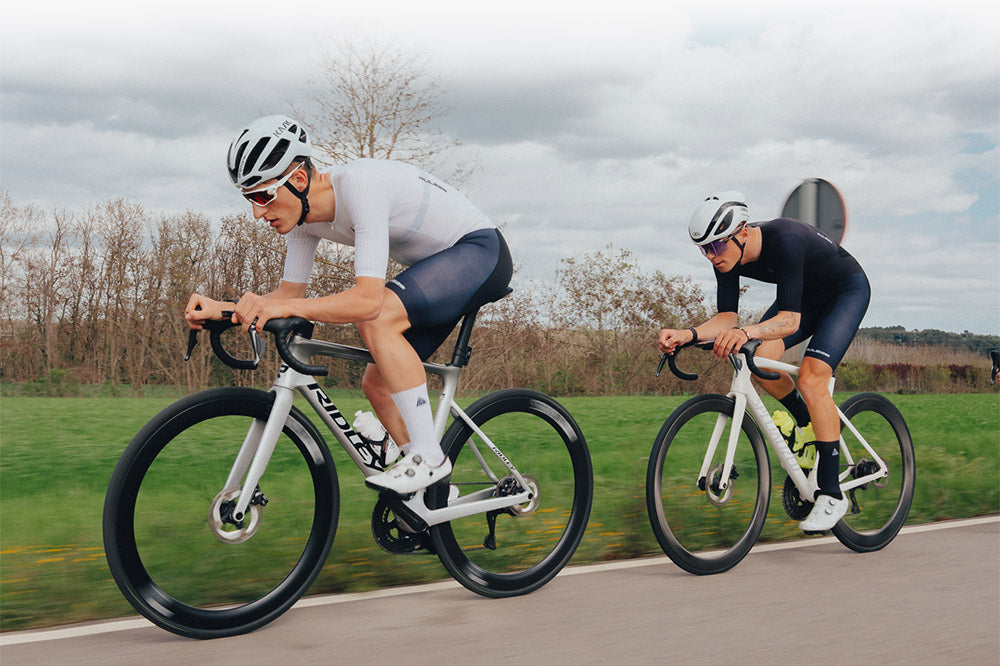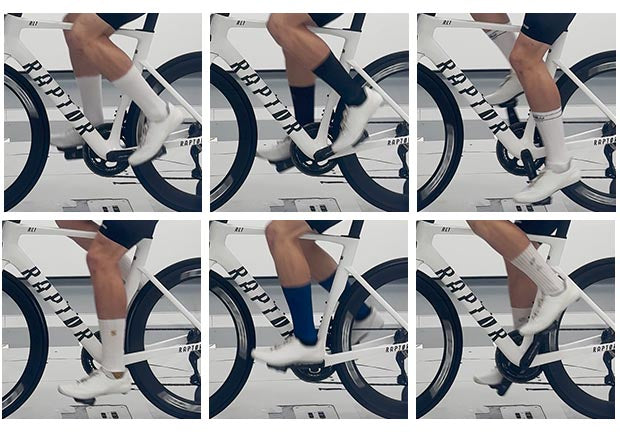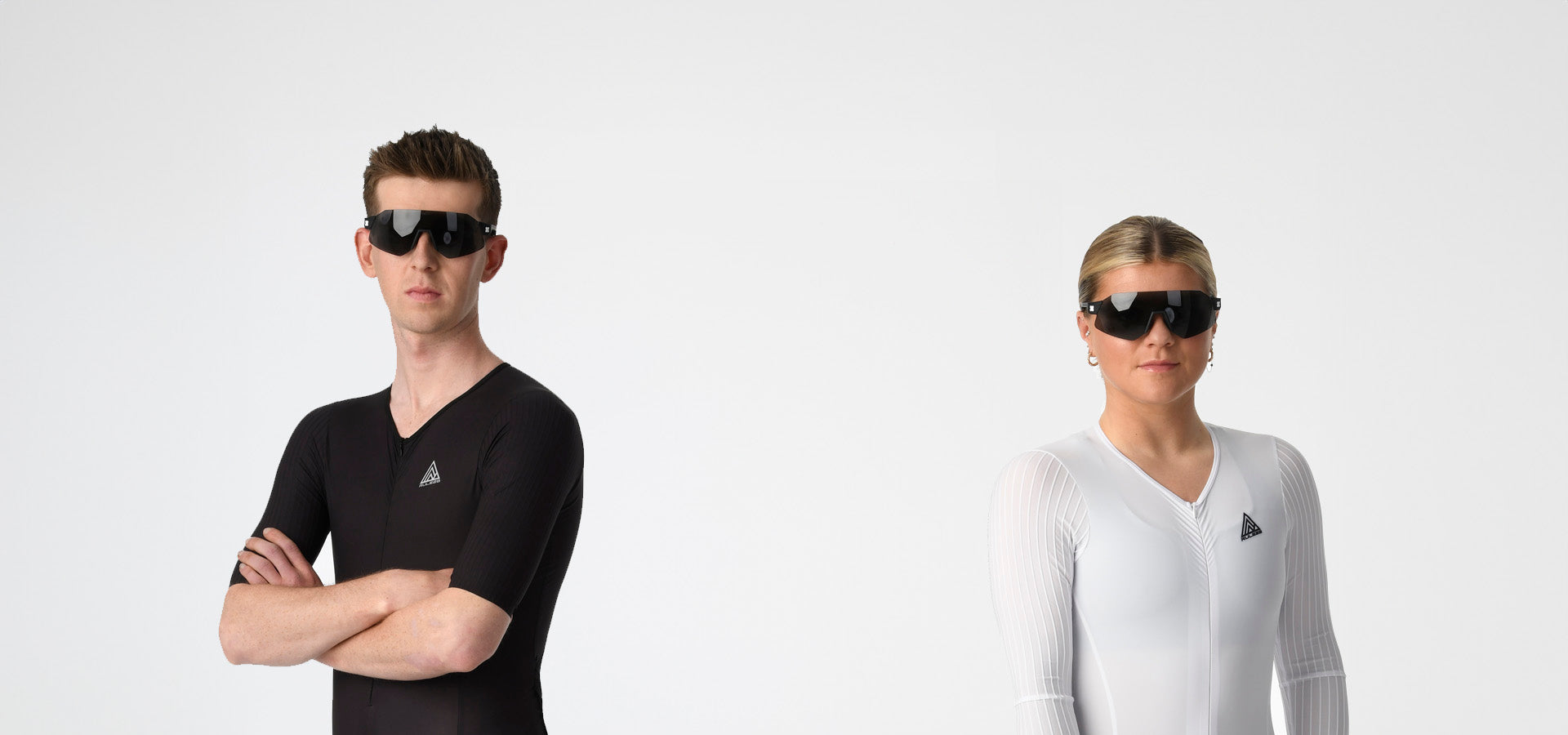How to Choose the Best Cycling Performance Upgrades Without Wasting Money
Navigating the world of performance upgrades can be overwhelming. Every brand promises to save you time or Watts, often at eye-watering prices. But how much of it is marketing fluff, and how do you decide where to invest your hard-earned money? This article breaks down Watt-saving claims, the costs behind them, and how to get the best bang for your buck.
Decoding Aero Claims: Are Brands Being Honest About Watt Savings?
TL;DR – Brands generally aren’t overly clear about how they reach their claimed watt savings, but third-party testing does exist!
Let’s take one large bike brand’s claim, in this case, Colnago, that their latest generation aero bike, the Y1RS, saves 20 watts over their last bike (V4RS) at 50kph. They provide the White Paper explaining how they tested the frame. However, in comparison testing to their V1RS frame, they don’t mention if that saving is with a rider present, handlebar widths, or what wheels and tires are used. We also don’t know if that was an average across all wind conditions or the peak at a specific one. If we take their word that all is identical, that watt saving still comes at ~$7,100 cost. That’s $355 per watt!
This is a similar story with a lot of kit and equipment, unfortunately. However, there are some useful third-party experiments that have been conducted. Tour Magazine has tested many bike frames with mannequin legs, while Cycling News recently tested wheels and bike frames with and without a rider. Some items work better for some riders than others, which is where wind tunnel testing comes into play to validate aero savings. At ATP Performance, we’ve been doing wind tunnel testing for Olympic athletes, professional, and recreational riders. Helmets and skinsuits can vary in performance dramatically from one rider to another, and wind tunnel testing can tell you for certain what will be fastest for you. But this itself is a high cost, often costing $1,290 per test and saving an average of 20-30w, so $52-39 per watt saved.
For the sake of easiness, we’ll take brand values and combine them with some relevant independent testing to give an aero watts/$ savings chart. Here’s a breakdown of cost per watt saved:
Aero Watt Savings: Cost per Watt
| Product | Price ($) | Watts Saved | $/Watt |
|---|---|---|---|
| Super wheels (Scope Artech 60 vs Fulcrum Racing 5 at 40kph) | 4,260 | 10 | 426 |
| Super bike aero frame (Colnago Y1RS vs V4RS climbing bike at 50kph) | 7,100 | 20 | 355 |
| Same super bike aero frame but heavier grade carbon (lower grade carbon, same frame profiles) | 3,870 | 20 | 194 |
| Better value slightly heavier wheels (Scribe Core Superlight 60 vs Fulcrum Racing 5 at 40kph) | 1,290 | 9 | 143 |
| Speedplay aero pedals (brand claim, unspecified speed) | 310 | 4 | 78 |
| Skinsuit (Rule28 One TT suit) | 450 | 20 | 23 |
| Wind tunnel test (requires equipment purchases after the test) | 1,290 | 25 | 52 |
| Aero handlebars (At 40kph, drops vs drops 42cm) | 320 | 10 | 32 |
| Aero road helmet (average price and saving at 40kph) | 260 | 11 | 23 |
| Aero tire (Continental/SwissSide claims averaged over various speeds and YAW) | 120 | 6 | 19 |
| 1x setup with chain catcher | 65 | 4 | 16 |
| Aero socks (vs cotton sock) | 30 | 6 | 5 |
Drivetrain Efficiency: Do Ceramic Bearings & Wax Chains Actually Save Watts?
TL;DR – Save the ceramic bearings for fast-moving parts with high revolutions, and embrace chain waxing.
The next consideration is drivetrain losses. In recent years, oversized pulley wheels (OSPW) have hit the market from multiple brands, while ceramic bearings and waxed chains have become more common. They can improve efficiency and reduce drivetrain wear. However, some upgrades, like ceramic bearings, have debatable longevity benefits.
Below is a cost-per-watt breakdown:
Drivetrain Efficiency Savings
| Product | Price ($) | Watts Saved | $/Watt |
|---|---|---|---|
| Ceramic pulleys | 270 | 1 | 270 |
| OSPW (Oversized Pulley Wheel) | 580 | 3 | 194 |
| Ceramic bottom bracket bearings | 350 | 2 | 175 |
| Ceramic wheel bearings | 570 | 5 | 114 |
| Chain waxing (waxer and wax) | 170 | 8 | 21 |
| Wax drip lube | 35 | 6 | 6 |
Rolling Resistance: Why Fast Tires Are the Best Value Upgrade
TL;DR – Fast tires are one of the best value upgrades, but look after them.
Finally, rolling resistance. Tires have come a long way over the last few years, becoming much faster and grippier. Since they are the main contact patch with the road, they are often overlooked as a performance enhancer. The difference between a rugged winter tire and a fast race-day tire can be in the region of 20-30 watts. Given that even expensive race tires cost at most $230 per pair, that’s a brilliant $9 per watt saved.
Rolling Resistance Savings
| Product | Price ($) | Watts Saved | $/Watt |
|---|---|---|---|
| Race tires (pair) | 230 | 25 | 9 |
Free Speed: How to Gain Watts Without Spending Money
TL;DR – Clean your bike, look after your kit, train your physiology, hone your skills, and train in the position you want to race in.
Some free performance optimizations include:
- Ride in an aero position – Body position accounts for 70-80% of aerodynamic drag. Training in an aero position will yield better performance gains than many expensive upgrades.
- Clean your bike and check your tires – A dirty drivetrain will lose you more watts than most upgrades will save. Regular maintenance extends component life and keeps efficiency high.
- Grease and maintain bearings – Well-maintained steel bearings can be just as efficient as ceramic ones. Using race oil for dry race conditions can reduce friction.
- Optimize training – Training effectively can yield more power gains than equipment upgrades.
- Improve bike handling skills – Being a better descender or cornering more effectively can save you more time than some expensive drivetrain upgrades.
Final Verdict: Where Should You Spend Your Money for Maximum Speed?
Cycling marketing can be overwhelming, but many cost-effective watt-saving options exist. Generally, clothing, chain lubrication, tires, and equipment that make you, the rider, more aerodynamic offer the best value. Outside of that, maintaining your bike and training in an aerodynamic position provide massive performance benefits.
Article by: Andy Turner
Head coach and lead aerodynamicist at ATP Performance. Andy has a wealth of practical and scientific knowledge regarding performance solutions and has worked extensively in wind tunnel testing and product assessment.





Share:
Woven vs. Knitted Fabrics: The Aerodynamic Edge and Trade-offs
Aero Sock Testing – Benchmarking Rule 28 Against the Market